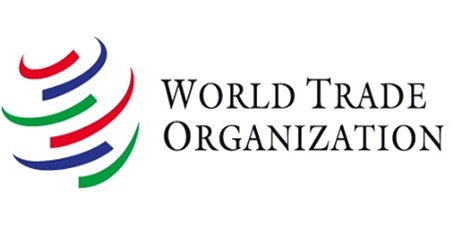The WTO is reviewing the trade policies and practices of the EU on 5 and 7 June 2023. The WTO Secretariat has produced a report as a basis for the review.
During the period under review the EU made progress on major policy initiatives including the European Green Deal; the effort to make Europe fit for the digital age; and the new political agenda to promote the EU’s global influence. These strategies are expected to have an impact on trade and investment policies.
Some measures are still in progress, such as the Carbon Border Adjustment Mechanism, green taxation and green government procurement. Other measures have already been adopted, including the Digital Services Act (DSA) and the Digital Markets Act (DMA). The review period also included the withdrawal of the UK from the EU in early 2020.
The EU’s economy recovered strongly in 2021 with GDP growth reaching 5.4%. The economic growth remained strong in 2022 despite the challenges arising from the Ukraine war. The European Union remained the world’s leading trader in 2021, with EUR 6.28 trillion traded in goods and services. China, Switzerland, the UK and the US were the European Union’s main trading partners.
The EU’s new trade strategy adopted in February 2021 with the title An Open, Sustainable, and Assertive Trade Policy, is based on open and fair trade, prioritizing multilateral cooperation. The multilateral trading system is a central principle of EU trade policy, and priority is being given to reform of the WTO.
In December 2022 the EU had 44 regional trading agreements in force. A new internal complaint mechanism, the Single-Entry Point, has been set up, and an office for trade enforcement and monitoring has been established. The EU facilitates trade with developing countries mainly through its Generalised Scheme of Preferences (GSP) composed of the standard GSP, the GSP+, and the Everything but Arms (EBA) arrangement, covering 66 economies at December 2022.
New rules relating to e-commerce removed the VAT de minimis exemption on imports of low-value items. An Import One-Stop Shop (IOSS) was introduced to simplify the process of declaring and paying VAT for distance sales. The Regulation on the EU Single Window Environment for Customs entered into force in 2022.
The simple average tariff was 6.5%, but in the agricultural sector the rates were three times higher on average compared to non-agricultural goods. The EU is a significant user of anti-dumping measures and countervailing measures (referred to as anti-subsidy measures) and in December 2022, 178 anti-dumping and countervailing measures were in place.
Subsidies at the EU level are mostly given to agriculture or for regional development. At the member State level, state aid has continued to be granted to promote environmental protection and energy savings.
Energy and climate policies grew in importance during the review period as the EU continued the shift towards renewable and low-carbon energy, improving energy security, and reducing emissions to achieve climate neutrality. Under the 2021 Fit-for-55 package these policies are aligned with the climate-related goals of the European Green Deal and the Climate Law. The package includes the Carbon Border Adjustment Mechanism and reform to energy taxation. Also, the REPowerEU plan has been drawn up to diversify the energy supply, save energy, and increase clean energy generation. The Plan allows faster permits for renewable energy projects and supports the development of renewable hydrogen.














